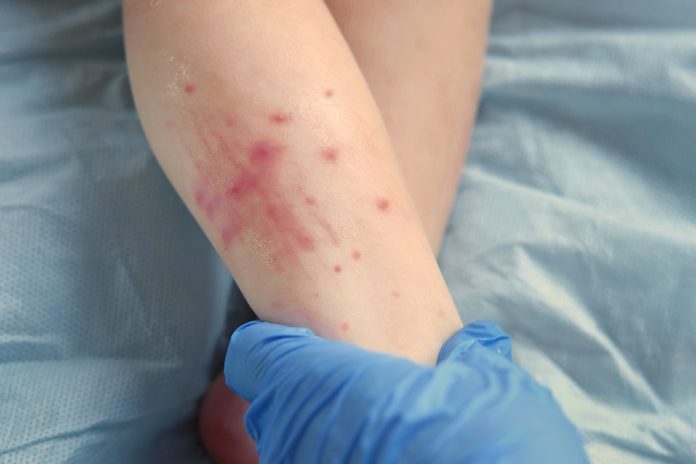Last year, cases of measles—a serious, vaccine-preventable disease that’s highly contagious—jumped by 79% around the world. Most of them were in children. That trend is continuing this year, threatening to reverse an impressive 73% drop in measles deaths worldwide from 2000 to 2018.
Cases in the U.S. are climbing, too. In just the first two months of 2024, 35 cases have already been reported in 15 states including California, Minnesota, Florida, New York, and Louisiana; in 2023, 58 cases were reported over the entire year.
Why are measles cases taking off, and how can people protect themselves?
Why measles cases are climbing
Not enough kids are getting vaccinated. For herd immunity, about 95% or more of a population needs to be vaccinated, but most countries around the world have been below that threshold for years. By 2019, 86% of kids worldwide had been vaccinated with a dose by their second birthday, but that number dropped even further to 81% in 2021. (The measles vaccine is given in two doses: one at a year, the next at age 4-6.)
Vaccination rates in the U.S. are declining, too, and vaccination exemption rates are creeping up. CDC data show that 93% of kindergarteners were vaccinated against measles during the 2021-22 school year
Vaccinating more children is the best way to prevent new outbreaks. The vaccine, which has been around since the 1960s, is given as a combination shot that also includes protection against mumps and rubella. One dose is 93% effective against measles, and two doses are 97% effective. “The science really supports the safety and effectiveness of vaccinations,” says Dr. Katherine Baumgarten, medical director for infection control and prevention at Ochsner Health in New Orleans. However, “we know there is a lot of distrust in vaccines, and that’s a shame. If vaccination rates continue to decline, then we will see more of the diseases that we had hoped to completely eliminate.”
How measles spreads
Measles is one of the most contagious diseases on the planet. It spreads through the air, by infectious droplets, and on surfaces. “If a person has not been exposed or vaccinated, then they generally get infected if they are exposed 90% of the time,” Baumgarten says. Measles can cause a rash, high fevers, and even brain swelling and death.
Cases pose a particular threat to people who can’t get vaccinated, such as babies less than a year old, people who have weakened immune systems due to medical conditions or transplant surgeries, and pregnant women—even if they’ve been vaccinated—since their immune systems are more susceptible while they are expecting. “If [people with measles] come to a doctor of hospital for care and are in a waiting room with other patients, they may expose other people,” Baumgarten says.
Why fewer kids are getting vaccinated
Growing vaccine-refusal is one reason. Another is COVID-19.
Measles cases had started climbing in 2019, but they dropped significantly in 2020, when much of the world went into lockdown and adopted stricter public health prevention measures, such as wearing masks and practicing social distancing. Those behaviors make it harder for any virus, including measles, to spread. It’s also possible that following the surge in cases in 2019, more of the world’s children became immune because they had contracted the infection, and therefore fewer were susceptible to the disease.
But lockdowns also interrupted kids’ vaccinations. As health resources shifted to controlling the pandemic, vaccination programs around the world were put on hold. The World Health Organization (WHO) estimates that 22 million children missed the first dose of their measles vaccine in 2022, most likely due to disruption caused by COVID-19.
Many of those kids still aren’t immunized. Some countries have strict programs for vaccinating kids at specific ages, so if child misses their window, they may find it hard to get immunized later on. “We do have more susceptible children globally, so outbreaks could get bigger and more frequent,” says Dr. William Moss, executive director of the International Vaccine Access Center at Johns Hopkins Bloomberg School of Public Health. “For an outbreak, you need two things: a susceptible pool of people, mostly children, and introduction of the virus.”
Outbreaks tend to originate elsewhere—but experts are still worried
There doesn’t seem to be a reservoir of virus endemic to the U.S. that’s seeding new cases. Most outbreaks in various states start when a person contracts measles during travel, then returns home.
But that scenario is still concerning, especially for communities where measles vaccination coverage is lower due to growing anti-vaccine sentiment or religious reasons for avoiding immunizations. In those areas, a susceptible population plus introduction of the measles virus could spawn a cluster of cases, Moss says.
Source link
Alice Park

















